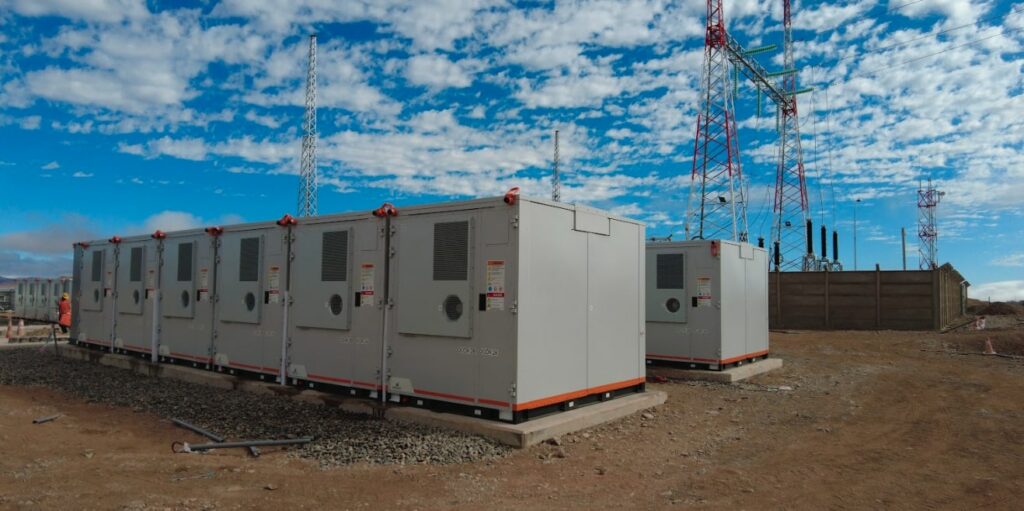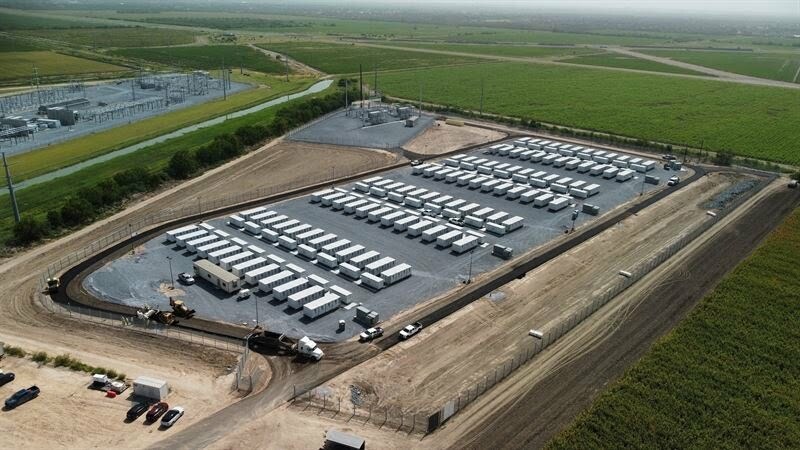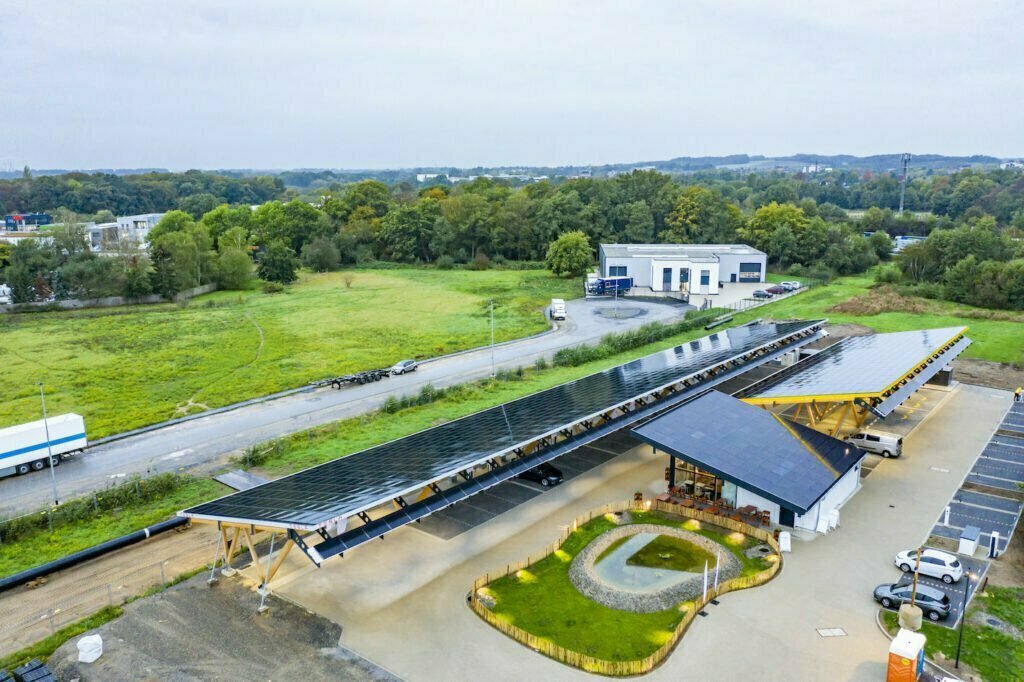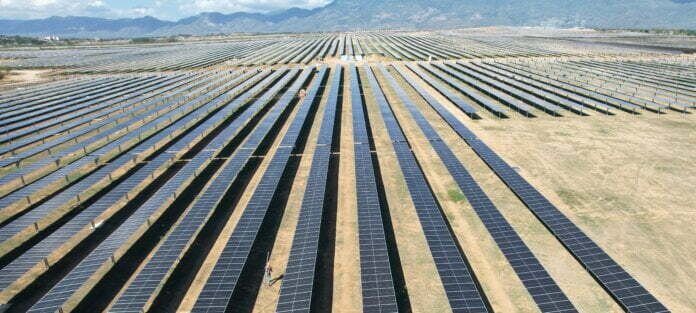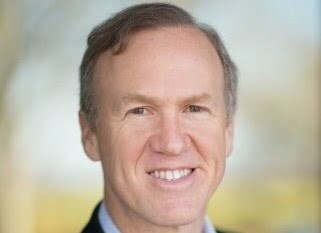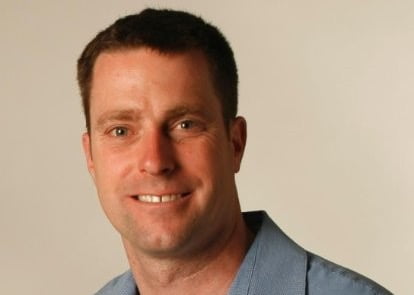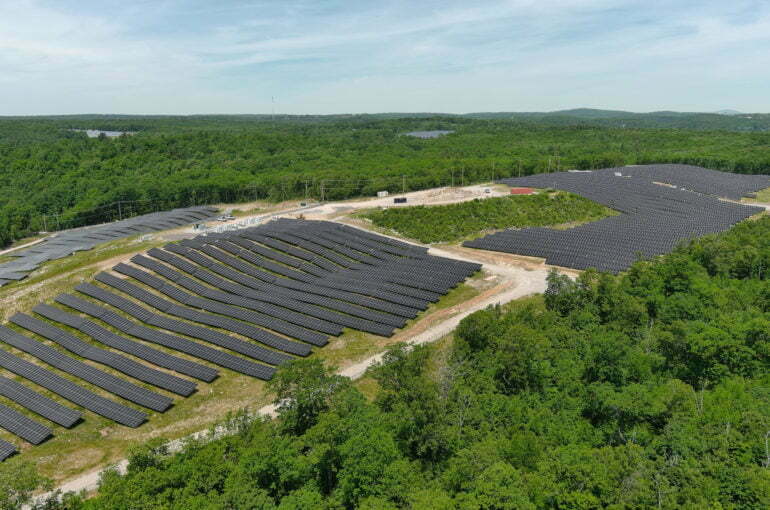Seed and Greet EV charge station, one of just two projects in Germany featuring large-scale BESS at an EV charging facility. Image: Tesvolt.
Germany’s installed based of large-scale energy storage facilities is predicted to roughly double in the next couple of years, after 2022 saw a comeback for the segment.
After a few consecutive years of declining in size, Germany’s utility-scale energy storage market saw a record 434MW/467MWh deployed during 2022, a record figure, according to a market review published by a consortium including experts at RWTH Aachen Technical University.
In the latest edition in an annual series, last year the researchers found that in 2021, the residential segment continued to lead the market but a renaissance in the underperforming large-scale systems segment (defined as over 1,000MWh energy capacity) was forecast for 2022.
That came after just 36MW/32MWh of large-scale installs were estimated for 2021, meaning 2022’s figures represent a 910% increase, RWTH Aachen expert Jan Figgener told Energy-Storage.news.
The residential segment still dwarfs large-scale for market share however: in 2021, 145,000 household systems totalling 739MW/1,268MWh were installed, compared to 1,164MW/1,944MWh of new residential installations in 2022 across about 200,000 homes. That represents 52% growth year-on-year in energy terms and 60% growth in power output for residential, defined for the purpose of the study as projects below 30kWh capacity.
Commercial and industrial (C&I) systems of between 30kWh to 1MWh capacity were a distant third by comparison to the other segments in 2022, with just 43MW/84MWh of systems approximated to have been installed, albeit it has also grown from the 27MW/57MWh recorded in 2021.
The report’s authors said cumulative installs for grid-scale projects reached 1,072MW/1,204MWh by the end of 2022, across 149 large-scale storage assets. However from adding up publicly announced projects alone, a further 1,123MW/1,414MWh could be installed within the next two to three years.
Unlike other advanced markets for utility-scale BESS where a wave of smaller sub-10MW projects leads to later waves of project twice or even ten times as large, project sizes in Germany remain relatively small. Around 77% are below 10MWh, although the authors noted that multiple projects of over 200MWh are announced for future deployment.
Evolving applications for Germany’s grid-scale BESS
The use cases for large-scale storage systems in Germany are beginning to shift. Ancillary services still remain the main application, with around 658MW/750MWh of energy storage built for this purpose to date. However, while prior to 2019, almost all large-scale performed frequency containment reserve (FCR) exclusively, saturation in that market led to declining prices paid by grid operators and a corresponding slowdown in the market to 2021.
Today’s energy market, characterised by high prices across the board, mean Germany’s FCR prices are again attractive enough for energy storage. This is not expected to last and increasingly, the recently introduced automatic frequency restoration reserve (aFRR) market which is estimated to be three to four times bigger in size than FCR is becoming an attractive option.
Large-scale energy storage used for renewable energy integration is also on the rise, with about 200MW/250MWh in operation today and 700MWh more projects announced. This is driven partly by the introduction of so-called ‘Innovation Tenders’ by the regulatory Bundesnetzagentur, which award contracts to projects that combine two forms of clean energy technology. This has led to a growth in mostly solar-plus-storage projects, with only one wind-plus-storage project winning through such an auction to date.
On a related note, this week the Bundesnetzagentur increased the maximum feed-in tariff (FiT) that PV-plus-storage projects can get through the Innovation Tenders by 25% from previous auction rounds, to 9,18ct/kWh (US$0.995/kWh). This has come after a recent auction round was severely undersubscribed.
There are also 130MW/150MWh of BESS in what the report called multi-use operation, where assets are combining functions such as behind-the-meter peak shaving with ancillary services.
Other use cases include 50MW/50MWh of large-scale storage in operation at large industrial sites and a very small wedge of others such as EV charge stations.
The final other use case highlighted by the report has drawn some interest from the global energy storage industry for its application of energy storage as a transmission asset: Germany’s transmission system operator (TSO) ‘GridBooster’ projects.
There are 450MW/450MWh of these planned as pilots, including the 250MW contract awarded to global technology provider Fluence by TSO Transnet. The GridBoosters essentially add N-1 redundancy to transmission lines, reducing the TSOs’ need to invest in expensive grid infrastructure with the BESS assets helping to increase the network’s carrying capacity.
The pilots are expected to come online in the next three years and their sole application will be as grid management resources.
Again, as with the Innovation Tenders, there has been some recent news about GridBoosters, with TSOs including requests to get a further tranche of such projects approved in long-term planning proposals filed with regulators this month.
In a September 2022 article for our quarterly journal PV Tech Power (vol.32), Energy-Storage.news writer Cameron Murray took a look at Germany’s grid-scale energy storage market and the drivers behind its expected return to life.
What remains to be seen is the impact of bigger picture topics that have already dominated energy industry conversation across the European Union in 2023. Those include the EU’s Green Deal Industrial Plan which includes measures to reform Electricity Market Design to promote the uptake of clean energy on the grid, and measures to stimulate economic activity across the clean energy value chain from raw materials extraction to manufacturing and deployment.
Continue reading


